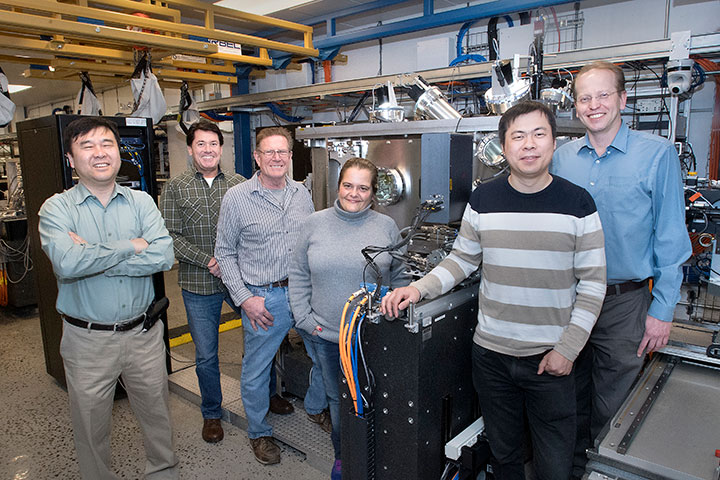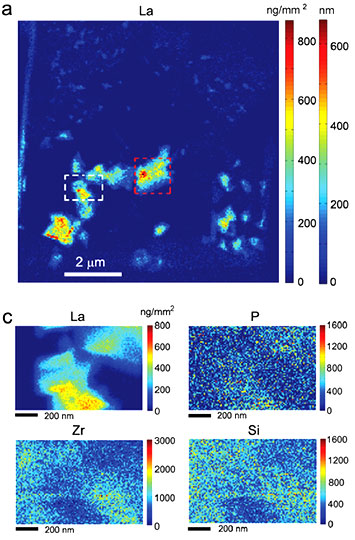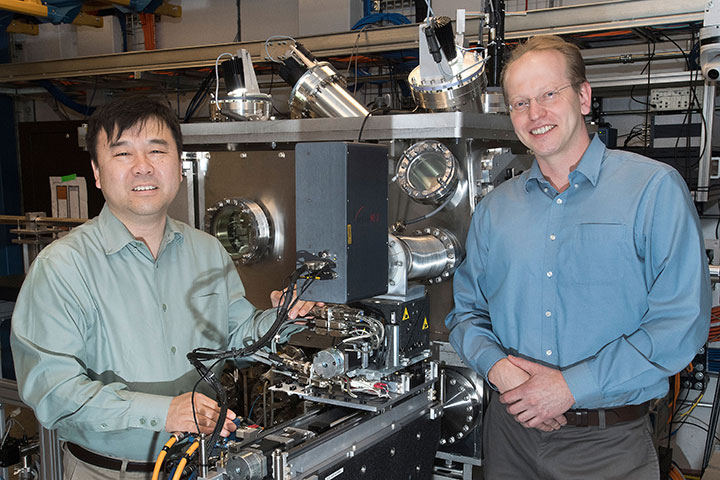Brookhaven Scientists Named Innovators of the Year
Innovate Long Island honors physicists at NSLS-II for invention of world-class microscope
March 10, 2017
By Lida Tunesi
 enlarge
enlarge
From left to right, Yong Chu, Brian Mullany, Dennis Kuhne, Nathalie Bouet, Hanfei Yan, and Evgeny Nazaretski
“The multilayer Laue lens microscope is a game-changer in x-ray imaging science,” said Chu. “Now researchers can visualize and analyze nanoscale structures down to a resolution of 10 nanometers, which is about 10,000 times smaller than the width of a human hair.”

Nanoscale chemical mapping of a battery electrolyte by the MLL microscope.
Nazaretski and Chu acted as lead developers for a team of scientists, engineers and technical staff including Kenneth Lauer, Hanfei Yan, Brian Mullany, Nathalie Bouet, Juan Zhou, and Dennis Kuhne of Brookhaven as well as Deming Shu from Argonne National Lab.
The group makes the multilayer Laue lenses themselves on-site at Brookhaven Lab in a process that requires extraordinary three-dimensional control. Thousands of atomic layers of silicon and tungsten silicide must be deposited onto base layers to make lenses of the desired shape.
In addition to providing outstanding resolution, these lenses are able to capture and focus a higher percentage of incoming light than similar devices, providing a better signal and shorter sample-scanning times. The microscope also incorporates incredibly precise sensing technology to track the position of the sample on the microscope, allowing for corrections if even miniscule vibrations or thermal changes affect the sample.
“This microscope is a unique tool which incorporates most recent developments in sensing, nanoscale motion, and position control. It allows measurements at different temperatures and environments, yielding insight into phase transitions and dynamic responses of various samples,” said Nazaretski.
In 2016 the MLL microscope garnered an Innovation Award from Microscopy Today as well as an R&D 100 Award from R&D Magazine.
The annual Innovators of the Year award given by the daily news website Innovate Long Island honors “Long Island’s best and brightest ideas” in categories such as science and technology, manufacturing, and craft food and beverage. Awardees this year run the gamut from cancer therapeutic developers to an artisan pickle company. Another Brookhaven Lab group was also recognized in 2015 for a surface-etching technique to increase solar cell efficiency.
Nazaretski and Chu’s work is supported by the DOE Office of Science.
Brookhaven National Laboratory is supported by the Office of Science of the U.S. Department of Energy. The Office of Science is the single largest supporter of basic research in the physical sciences in the United States, and is working to address some of the most pressing challenges of our time. For more information, please visit science.energy.gov.
2017-12084 | INT/EXT | Newsroom










